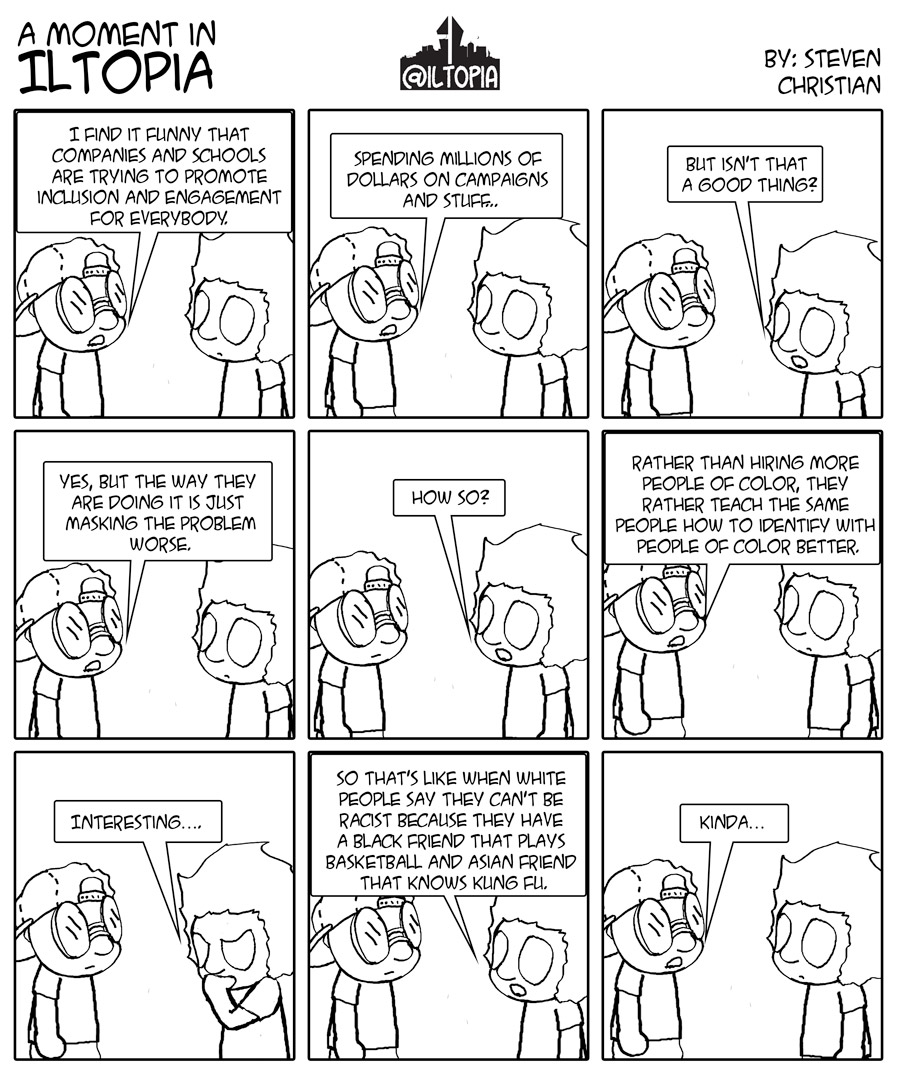The opening reception of ariella tai’s “hoe dor,” an exhibition of glitch art inspired by Game of Thrones character Hodor (Kristian Nairn), took place on Friday, March 9 at Open Signal PDX. The show’s artist, tai—who is also a video essayist, film scholar and Precipice Fund co-recipient—is one of two 2017 New Media Fellows at Open Signal PDX, the media arts center also known as Portland Community Media.
tai cited Hodor’s character attributes including deep loyalty, physical and mental possession by an heir to a throne, an inability to speak clearly, which—spoiler alert—turns out to be the articulation of his own destruction, and finally his violent death when he is torn to pieces by frozen white devils.
“[Hodor’s] identity being articulated as the moment of his death resonated with how depictions and narrative deployments of black death, as well as the labor leading up to and surrounding these deaths, are mobilized in popular film and television,” explained tai in the exhibition statement.
The lobby of Open Signal was transformed into a gallery space for “hoe dor,” with TVs and other multimedia displays circulating the works. There were five pieces total: “she’s not going to get more dead,” “selected.gif,” “hold me,” “jealous or crazy” and “hoe dor.” The source media were scenes from different American movies and TV series with prominent Black characters or messages, such as Eve’s Bayou (1997), Boomerang (1992), Girls Trip (2017), Blade (1998) and Jessica Jones.
In the tradition of glitch art, none of the scenes read as directors intended, but instead were programmed by tai to loop through an imperfect circle, retaining digital artifacts, distorting colors and freezing motion that would otherwise cause the unfamiliar spectator to frantically call tech support.
Each of tai’s pieces dealt with a different theme of Black cinematic representation, with glitch programming representing the adjustive labors Black people perform to see themselves and construct culturally significant narratives within traditionally whitewashed Hollywood cinema. For example, “she’s not going to get more dead” used scenes from Blade to illustrate a narrative on Black love in conjunction with a glitching .mp3 file to provide a soundtrack that was part hip-hop, part autonomous sensory meridian response therapy—though tai stated at the reception that she did not have ASMR in mind when she programmed the files.
“selected.gif” was a collection of broken-looking GIF files, the arrangements of which made room for the curatorial selection of GIFs and the elevation of lowbrow internet creativity as professional art worthy of exhibition and critique. Framed by stained curtains, “hold me” played glitching scenes from Girls Trip and Boomerang alongside one another. The curtain added another physical layer between the viewer and the screen.
Another layer of glitch effects was added to the presentation of “hold me” when viewed through curtain material, conceptualizing the layer as a physical force and a digital construct while drawing the viewer to their similarities. The curtains’ stains evoked a gross feel reminiscent of unclean, forbidden pleasure, with their high-gloss texture feeling both significant to the exhibition and in step with contemporary art trends circa 2016.
The monitors on which tai exhibited her programs were essential to viewing the full message of “hoe dor.” Before “hoe dor,” I didn’t realize all TV and monitor-based art is also based within the time the monitor was created. For example, ‘90s episodes of British comedy series Absolutely Fabulous displayed similar projections one might currently find at Portland Art Museum: A series of slow-mo sunsets or sunrises in reverse (cue art school–instilled sense of awe) are displayed on 1940–50s era TVs, whereas the PAM exhibitions display on 70’s–90’s era big-screen TVs. Tai’s monitors seemed to be from the ‘90s–2010s, as were her media sources, perhaps with exceptions here and there, like a late ‘80s movie or monitor among the rest.
“hoe dor” felt significant as a collection of glitch works created with a Black aesthetic as the focal priority, centralizing on a Black audience but leaving enough room for non-Black audiences to engage with the works.
Enforcing canons can be stifling and exclusionary, but building material for new canons is central to all academic practices, art and new media included. As a white cisgender gay man who engages in queer politics, I understand the principles of tai’s work, but I know that I am not the target audience of “hoe dor.” My experience felt significant and can mean whatever it wants to mean, but I know I am not the end-all authoritative voice to define the exhibition.
No matter who views “hoe dor,” one can see messiness as an aesthetic, a process, a genre term for difficult emotional states and a means of experiencing art.







